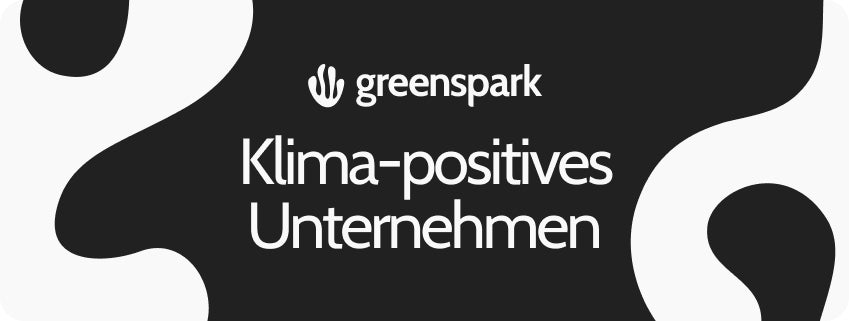
Was wäre, wenn die Realität, die Sie täglich erleben, nur ein kleiner Bruchteil dessen wäre, was da draußen wirklich ist? Haben Sie jemals gespürt, dass es im Leben mehr gibt, als man auf den ersten Blick sieht?
In jedem von uns steckt ein mächtiges Werkzeug, die Zirbeldrüse oder das dritte Auge, das darauf wartet, geweckt zu werden. Einmal aktiviert, erschließt es tiefere Ebenen des Bewusstseins und der Intuition und hilft Ihnen, die Welt in einem völlig neuen Licht zu sehen.
Momentan leben Sie vielleicht nur in 5 % der Realität. Aber es gibt eine Möglichkeit, die restlichen 95 % zu erschließen. Indem Sie Ihr drittes Auge öffnen, enthüllen Sie Dimensionen des Lebens, die Sie sich nicht einmal im Traum vorgestellt haben.
Das Faszinierende am dritten Auge ist, wo es verborgen ist – tief im Gehirn, fernab von jeglichem Licht. Warum also sollte dieses „Auge“ in der Dunkelheit verborgen sein? Genau das werden wir jetzt erforschen. Bleiben Sie dran, während wir die Geheimnisse des dritten Auges entschlüsseln und die Tür zu einer neuen Sicht der Realität öffnen.
Panaprium ist unabhängig und wird vom Leser unterstützt. Wenn Sie über unseren Link etwas kaufen, erhalten wir möglicherweise eine Provision. Wenn Sie können, unterstützen Sie uns bitte monatlich. Die Einrichtung dauert weniger als eine Minute und Sie werden jeden Monat einen großen Beitrag leisten. Danke schön!
Die Zirbeldrüse verstehen
Bevor wir uns mit den tieferen Aspekten der Zirbeldrüse oder des dritten Auges befassen, beginnen wir mit ihrer grundlegenden Funktion. Es handelt sich um eine kleine, erbsenförmige Drüse, die sich zwischen den beiden Hemisphären Ihres Gehirns befindet. Wissenschaftlich ist bekannt, dass die Zirbeldrüse dabei hilft, Schlafmuster zu regulieren, indem sie Melatonin produziert – ein Hormon, das Ihrem Körper mitteilt, wann es Zeit zum Ausruhen ist. Wenn Ihre Augen erkennen, dass die Sonne untergeht, wird die Zirbeldrüse aktiviert und setzt Melatonin frei, um Sie schläfrig zu machen. Wenn die Sonne wieder aufgeht, verlangsamt sich die Melatoninproduktion und hilft Ihnen beim Aufwachen.
Ja, die Zirbeldrüse ist lichtempfindlich – aber nicht auf die gleiche Weise wie Ihre Augen. Sie erkennt Licht nicht direkt aus der Außenwelt. Stattdessen verlässt sie sich auf Signale Ihrer Augen, um zu erkennen, wann es dunkel oder hell ist. Aber was, wenn ihr wahrer Zweck über das bloße Einschlafen hinausgeht?
Entdecken Sie die alten Theorien
Seit Jahrhunderten wird das dritte Auge mit Spiritualität und höherem Bewusstsein in Verbindung gebracht. Viele alte Kulturen glaubten, es sei viel mehr als eine biologische Uhr. Tatsächlich nannten es Philosophen wie René Descartes den „Sitz der Seele“ und meinten, es könne uns mit einer tieferen, spirituellen Welt verbinden. Moderne Spiritualisten glauben, dass diese winzige Drüse uns Zugang zu unserem „inneren Licht“ verschafft – einer Form höheren Bewusstseins oder Intuition.
Wenn wir uns an alte Weisheiten erinnern, finden wir noch mehr Hinweise. In der chinesischen Medizin beispielsweise wird das Ohr als eine Karte des gesamten Körpers angesehen. Akupunkteure glauben, dass jeder Teil des Ohrs einem Organ entspricht. Wenn ein bestimmter Punkt am Ohr stimuliert wird, kann dies die innere Heilung aktivieren. Einer dieser Punkte wird als „Punkt des inneren Lichts“ bezeichnet. Dies ist nicht nur eine Metapher – es handelt sich um einen echten Akupunkturpunkt, der angeblich das tiefere Bewusstsein einer Person anspricht. Und wenn ein Kristall oder Edelstein auf diesen Punkt gelegt wird, soll dies die innere Sicht einer Person erwecken und ihr Zugang zu Teilen ihrer selbst verschaffen, die sie sonst möglicherweise nicht sehen würde.
Doch die Vorstellung eines „inneren Lichts“ ist nicht nur auf östliche Traditionen beschränkt. Im alten Ägypten trugen Priesterinnen bei Ritualen Kristalle auf der Stirn, weil sie glaubten, dies würde ihnen helfen, höhere spirituelle Frequenzen zu erreichen. Diese Stelle, die heute als „Drittes Auge“ bekannt ist, entspricht der Position der Zirbeldrüse. Die Idee ist, dass diese Drüse das Potenzial hat, uns mit etwas Größerem zu verbinden, etwas jenseits der physischen Welt.
Praktiziere spirituelle Rituale
Was also bedeutet dieses innere Licht wirklich und welche Rolle spielt die Zirbeldrüse dabei? Um diese Frage zu beantworten, müssen wir verstehen, wie die Energie des Körpers funktioniert. Das Herz ist das Zentrum unseres Energiefeldes – es pumpt Blut durch den Körper und erzeugt Wärme oder das, was viele spirituelle Traditionen als „Feuer“ bezeichnen. Feuer wiederum erzeugt Licht. Dabei handelt es sich nicht um buchstäbliches Licht, sondern um eine Form von Energie, die wir innerlich spüren und erfahren. Das Herz wird also zur Quelle unseres inneren Feuers – unseres inneren Lichts.
Die Zirbeldrüse ist mit diesem inneren Licht verbunden und fungiert fast wie ein Empfänger. Die Energie aus Ihrem Herzen, das als Ihr emotionales oder spirituelles Zentrum betrachtet werden könnte, schwingt mit dem dritten Auge mit. Diese Beziehung zwischen Herz, Zirbeldrüse und Gehirn bildet ein Netzwerk, das nicht nur äußeres Licht verarbeitet, sondern auch Ihr inneres Licht, Ihr tieferes Selbstgefühl, reflektiert. Man glaubt, dass diese Verbindung Ihnen hilft, Ihre spirituellen Erfahrungen und Ihre innere Welt zu steuern.
Tatsächlich berichten viele, die meditieren oder spirituelle Rituale praktizieren, dass sie Lichtblitze oder leuchtende Farben sehen, selbst wenn ihre Augen geschlossen sind. Dies deutet auf eine Verbindung zwischen dem äußeren Licht, das wir wahrnehmen, und dem inneren Licht, das wir erzeugen, hin. In Momenten tiefer Meditation oder des Gebets wird dieses innere Licht stärker ausgeprägt und gibt den Menschen ein Gefühl der Verbundenheit mit etwas Größerem als sich selbst.
Verwenden Sie Ihr Gehirn zum Visualisieren
Nachdem wir nun die Rolle des dritten Auges bei der Verarbeitung von äußerem und innerem Licht verstanden haben, wollen wir uns genauer ansehen, wie wir die Realität wahrnehmen. Unsere Sinne – Sehen, Hören, Schmecken, Tasten und Riechen – sammeln Informationen aus der Welt um uns herum. Aber wussten Sie, dass Ihr Gehirn nur etwa 5 % der verfügbaren Informationen verarbeitet? Das bedeutet, dass die Realität, die Sie sehen, hören und fühlen, nur ein kleiner Teil des Gesamtbildes ist.
Unser Gehirn ist wie ein Projektor im Kino. Stellen Sie sich vor, Sie sitzen in einem Kino und sehen einen Film auf der Leinwand. Die Bilder und Töne erscheinen real, aber sie passieren nicht wirklich vor Ihnen. Sie werden von einem Film im Projektor auf die Leinwand projiziert. Auf die gleiche Weise nimmt Ihr Gehirn die Informationen, die es von Ihren Sinnen erhält, und „projiziert“ sie als Ihre Realität. Deshalb erscheinen Ihnen die Bilder in Ihrem Kopf immer noch real, wenn Sie die Augen schließen und visualisieren oder träumen. Ihr Gehirn ist in der Lage, sein eigenes Licht und seine eigenen Bilder zu erzeugen, auch ohne externe Eingabe.
Noch interessanter ist, dass dieser Prozess Energie verbraucht. So wie sich ein Projektor nach längerem Betrieb aufheizt, verbraucht auch Ihr Gehirn Energie, um die Realität zu erschaffen, die Sie erleben. Deshalb brauchen Sie Schlaf. Ihr Gehirn kann diese Projektion der Realität nur eine gewisse Zeit aufrechterhalten, bevor es sich ausruhen muss. Tagträumen ist beispielsweise eine Möglichkeit für Ihr Gehirn, eine Pause von der Verarbeitung der äußeren Realität einzulegen und sich auf etwas Innereres, weniger Stressiges zu konzentrieren.
Erschaffe deine neue Realität
Eine der wichtigsten Erkenntnisse, die wir daraus ziehen können, ist, dass wir nicht nur passive Beobachter der Realität sind. Wir sind aktive Teilnehmer an ihrer Gestaltung. Das Licht, das wir sehen, und die Erfahrungen, die wir machen, werden davon geprägt, wie unser Gehirn die Energie um uns herum interpretiert. Das bedeutet, dass wir eine gewisse Kontrolle darüber haben, wie wir die Welt wahrnehmen.
Stellen Sie es sich so vor: Wenn Ihr Gehirn wie ein Projektor ist und Sie die Bilder erzeugen, die Sie sehen, können Sie diese Bilder ändern. So wie Sie den Film in einem Projektor wechseln können, um einen anderen Film zu zeigen, können Sie die Art und Weise ändern, wie Sie denken, fühlen und Ihre Realität erleben. Hier kommen Praktiken wie Visualisierung und positives Denken ins Spiel. Wenn Sie sich etwas lebhaft vorstellen – sei es ein Ziel, ein Traum oder ein gewünschtes Ergebnis – programmieren Sie Ihr Gehirn im Wesentlichen darauf, diese Realität zu projizieren. Mit der Zeit, wenn Sie sich mehr auf diese positiven Bilder konzentrieren, beginnt Ihr Gehirn, Ihre Erfahrung in Übereinstimmung mit ihnen zu gestalten.
Es ist jedoch wichtig, sich daran zu erinnern, dass wir zwar Einfluss auf unsere Realität haben, aber nicht die alleinigen Schöpfer sind. Genau wie in einem Kino, in dem mehrere Projektoren gleichzeitig laufen können, sind wir alle Teil eines größeren Systems. Das Universum mit seinen Naturgesetzen und Rhythmen spielt ebenfalls eine Rolle bei der Gestaltung dessen, was wir erleben. Das bedeutet, dass wir zwar unsere Realität erschaffen und beeinflussen können, aber auch in einem größeren Rahmen arbeiten – einem, der mit allem um uns herum verbunden ist.
Nutzen Sie die Kraft der Energie
Im Mittelpunkt dieser Idee steht das Konzept der Resonanz. Resonanz tritt auf, wenn eine Energieform in Harmonie mit einer anderen schwingt. Wenn dies geschieht, wird die Energie verstärkt und kraftvoller. Im Fall der Zirbeldrüse und des inneren Lichts kann die Energie aus Ihrem Herzen, Ihrem Verstand und Ihrer Seele mit der Energie des Universums in Resonanz treten und so eine stärkere Verbindung zu Ihrer inneren Weisheit und Intuition herstellen.
Deshalb sind Meditation, Achtsamkeit und spirituelle Praktiken so wirksam. Sie helfen Ihnen, Ihre innere Energie mit der universellen Energie um Sie herum in Einklang zu bringen. Wenn Ihre Gedanken, Emotionen und Ihr physischer Körper im Einklang sind, können Sie eine tiefere Ebene des Bewusstseins erreichen. Dann leuchtet Ihr inneres Licht am hellsten und Ihre Verbindung zum Universum wird klarer.
Erwecke dein inneres Licht
Die Aktivierung Ihres dritten Auges ist mehr als nur ein mystisches Konzept – es ist eine transformierende Erfahrung, die Ihnen zu einem tieferen Verständnis Ihrer selbst und des Universums verhelfen kann.
Wenn Sie die Beziehung zwischen Ihrem Herzen, Ihrem Verstand und Ihrer Zirbeldrüse verstehen, können Sie beginnen, diese verborgene Kraft freizusetzen und sie zu nutzen, um Ihre Realität zu gestalten. Sie werden beginnen, über das Gewöhnliche hinauszublicken und Einblicke in Ihre innere Welt, Ihre Intuition und die Verbindung zwischen allen Dingen zu gewinnen.
Ob durch Meditation, Visualisierung oder einfach dadurch, dass Sie bewusster auf Ihre Gedanken und Handlungen achten, Sie werden sich der Energie, die durch Sie und um Sie herum fließt, stärker bewusst und lernen, Ihre Realität mit Absicht und Ziel zu erschaffen.
Denken Sie auf Ihrer Reise daran, dass der Weg zum Erwachen für jeden Menschen einzigartig ist. Er erfordert Geduld, Übung und die Bereitschaft, über das hinauszugehen, was Sie zu wissen glauben. Aber die Belohnung – mehr Klarheit, gesteigerte Intuition und ein stärkeres Gefühl der Zielstrebigkeit – ist die Mühe wert.
Sind Sie also bereit, den nächsten Schritt zu tun? Egal, ob Sie neu dabei sind oder sich bereits auf Ihrem spirituellen Weg befinden, das Öffnen Ihres dritten Auges ist eine Gelegenheit, das Leben reicher, lebendiger und tiefer verbunden zu sehen. Vielen Dank, dass Sie mich auf dieser Reise begleiten, und ich freue mich darauf, von den unglaublichen Erkenntnissen und Erfahrungen zu hören, die Sie unterwegs freisetzen.
War dieser Artikel hilfreich für Sie? Bitte teilen Sie uns in den Kommentaren unten mit, was Ihnen gefallen oder nicht gefallen hat.
About the Author: Alex Assoune
Wogegen Wir Kämpfen
Weltweit-Konzerne produzieren in den ärmsten Ländern im Übermaß billige Produkte.
Fabriken mit Sweatshop-ähnlichen Bedingungen, die die Arbeiter unterbezahlt.
Medienkonglomerate, die unethische, nicht nachhaltige Produkte bewerben.
Schlechte Akteure fördern durch unbewusstes Verhalten den übermäßigen Konsum.
- - - -
Zum Glück haben wir unsere Unterstützer, darunter auch Sie.
Panaprium wird von Lesern wie Ihnen finanziert, die sich unserer Mission anschließen möchten, die Welt völlig umweltfreundlich zu gestalten.
Wenn Sie können, unterstützen Sie uns bitte monatlich. Die Einrichtung dauert weniger als eine Minute und Sie werden jeden Monat einen großen Beitrag leisten. Danke schön.































0 Kommentare